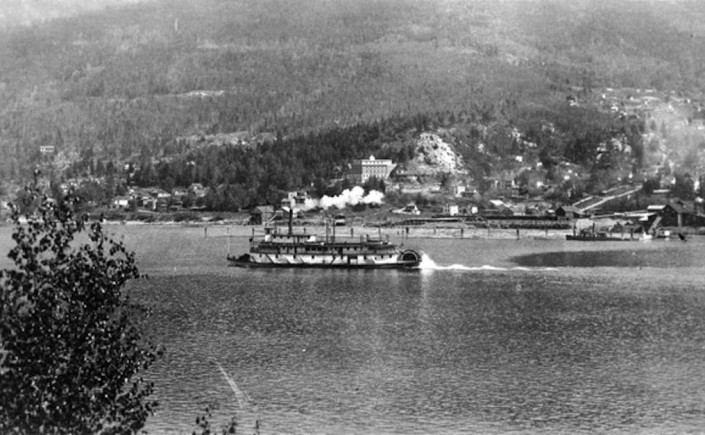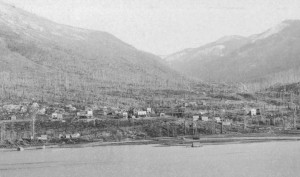From Colony To Province
In 1850, although it was claimed as British territory, most of the land west of the Rockies and north of the 49th parallel, then known as New Caledonia, was home to First Nations people and a small colony of Hudson Bay Company employees and their families located in Victoria, the main settlement of the newly created (1849) crown colony of Vancouver Island. Then, in 1857 gold was discovered along the Fraser River and further up the Fraser Canyon, triggering a gold rush of mainly American citizens. In order to maintain control of the region, the British government decided to organize the mainland portion of New Caledonia as a new colony called British Columbia (1858).
Subsequent gold rushes into the mid-sixties and the demand for expensive investments in roads and other government services created huge debt which was partially alleviated by combining the two colonies into one – BC (1866).
In great need of outside development, the colonials were faced with the choice of joining the United States – they already had strong economic ties to San Francisco – or remaining British as a province of the new Dominion of Canada (1867). In return for Canada absorbing its debt and promising to connect it with the east through a trans-continental railway, BC joined Confederation in 1871. The Canadian Pacific Railroad (CPR) was finally completed in 1885 just as major silver, gold, and copper strikes brought attention and investments to the West Kootenay.
Riches In The Kootenay
American prospectors discovered silver, lead and zinc ore (galena) on Kootenay Lake (Riondel) in 1883 and on Toad Mountain (Nelson) in 1886. Further galena discoveries were made in the Slocan (Sandon and New Denver), as well as gold at Rossland and Ymir. At a time when most of the province was seen as a vast, unproductive wilderness, this made the Kootenay a potentially powerful contributor to the future prosperity of the province. Nelson was well established as a mining camp by 1890 but it soon became apparent that the extraction of galena required large labour forces, huge financial investment, a developed transportation system, and the building of on-the-spot smelters. In the race to develop, grow and survive, there would be only a few winners out of all the camps and small settlements dotted throughout the region. If Nelson was to be one, it would need men and women of determination and vision.
Over the next two decades Nelson did prosper and grow into a city of almost 10,000, becoming a CPR train and steamboat terminus as well as a centre for other railroad companies. It developed its own hydro electric company and streetcar system, the Hall Mines Smelter and numerous lumber mills employed hundreds of workers, it attracted retired English army and navy officers and remittance men who developed an orchard industry, and as “The Queen City” (incorporated in 1897) it became the administrative and cultural centre of the Kootenay.

